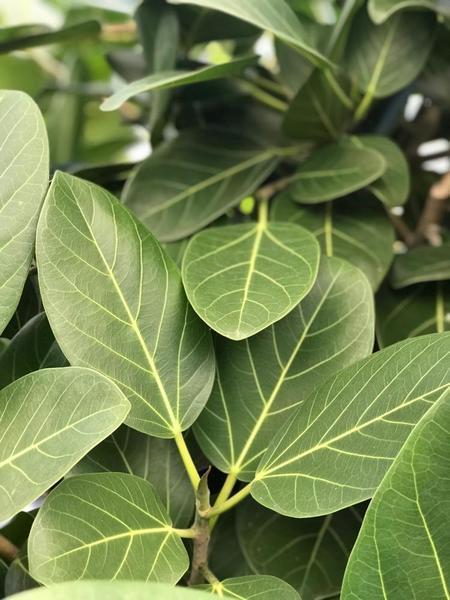
The Ficus Audrey is a new arrival in the houseplant market. These beautiful Ficus trees make great indoor plants for high light areas. Our 17 and 21 inch trees are field grown to create a large caliper trunk. The Audrey is sold in a 14, 17 and 21 inch pot with heights ranging from 5.5 - 10 feet tall.
The meters below indicate a range of light and tolerance to drought. The ranges are indicated by the little light bulbs and the small water drops.
Light Instructions

Water Instructions


Whitefly has become a significant pest of certain Ficus in South Florida. These insects spread rapidly and cause severe defoliation of many Ficus species. Adult flying whitefly lay eggs which eventually become an immobile nymph resembling scale insects. The nymph becomes a pupa from which the winged adult emerges. The pupa casing is not easily removed from the leaf, even if the insect within has been long dead. Farm Life takes great care to minimize whitefly impact on our Ficus trees, but these trees are grown outdoors for 5 years or more before they are ready for sale. At least 2 years are spent in an open field where perfect management is much more difficult. Once a Ficus tree has been harvested and brought back into our shadehouses, whitefly control can be much more precise. Given the persistence of the pupa casing, it is possible to find old casings stuck to the inner/older foliage of the trees. The outer newer foliage should be clean and free of whitefly. Whitefly will exploit the newest foliage first, which is a good way to determine if a whitefly infestation is ongoing, or if the whitefly pupae are old and dead. Live whitefly nymphs and pupae will be sealed, and have a pale yellow color. The pupae casings highly resemble certain species of scale insects, however scale is an uncommon pest of the Ficus benghalensis in the nursery environment. Mainspring GNL is a new systemic pesticide that is highly effective on whitefly and other insects. Applied as a drench, the active ingredient is translocated upward in the plant and will control whitefly insects. If whitefly adults are already present, the systemic action of Mainspring may not be fast enough to avoid major damage to the tree. In this case, a Mainspring drench, and a spray of horticultural oil once per week for 3 weeks should keep populations under control while the active ingredient of Mainspring is distributing though the tree. An alternative to oil that is effective on all stages of mites and whitefly is Savate.
Mealybugs can be removed with a systemic insecticide drench and hand cleaning. Thorough hand cleaning is difficult since the mealy bugs will be deep inside the emerging new foliage. These growing points are fragile and too much mechanical manipulation will snap the growing point off. If pesticides are not an option, try horticultural oil directly sprayed onto the insects. A second and third treatment, if using oils, will be necessary. Space out the sprays at 1 week intervals to break up the mealybug life cycle. Mealybugs like to hide in the newly emerging foliage or among the air roots that are present on many Ficus species.
Infrequently we encounter spider mites, or to an even lesser degree broad mites. When spider mites are present they will create a dusty/dirty look on the bottom of infested leaves. The 'dust' is made up of live mites, shed skins, eggs and actual dirt caught in the no longer smooth leaf surface. Savate is also registered for use on microscopic mites including broad mites.
Other Links
Whitefly damage and immobile nymph stage on Ficus maclellandii.
Broad Mite Damage on Ficus altissima 'Yellow Gem'
Ficus altissima 'Yellow Gem'
Ficus benghalensis 'Audrey'
Ficus elastica 'Abidjan'
